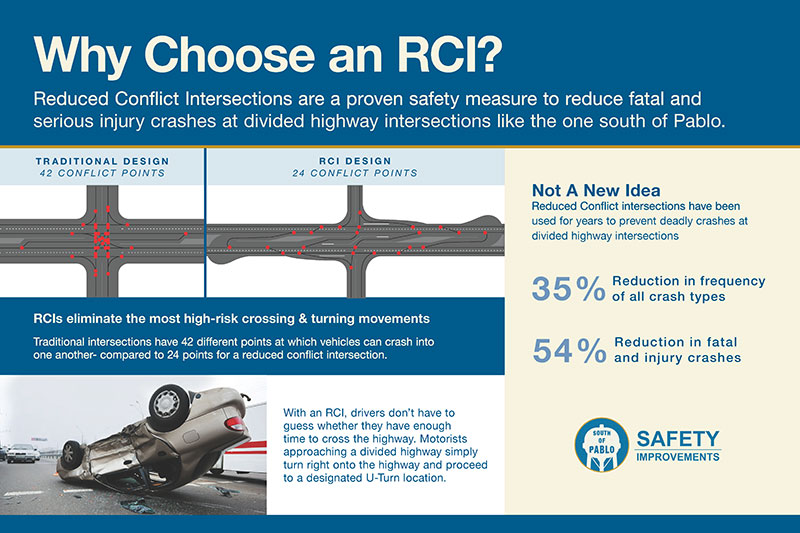What is an RCI?
Reduced Conflict Intersections (RCIs) are an innovative way to minimize the potential for deadly T-bone or right-angle crashes at divided highway intersections like the one near Pablo. These types of crashes are among the most devastating, representing more than 50 percent of all automobile crash deaths.
RCIs decrease fatalities and injuries caused by right-angle, T-bone-style crashes on four-lane divided highways by eliminating the most high-risk crossing and left-turning movements. This innovative system has been shown to reduce the frequency of all crash types by 35% and reduce fatal and injury crashes by 54% at intersections like the one near Pablo. RCIs aren’t a new idea. They’ve been used for decades in other states to enhance safety features at intersections. With an RCUT, as chosen for this project, drivers don’t have to wait for a gap in traffic to cross the highway. Motorists approaching a divided highway from a side road turn right onto the highway and then make a U-turn at a designated location.

This approach is modeled after Federal Highway Administration (FHWA) Proven Safety Countermeasures utilized in several states to reduce road injuries.
See an RCI in Action
Video courtesy of the Minnesota Department of Transportation
